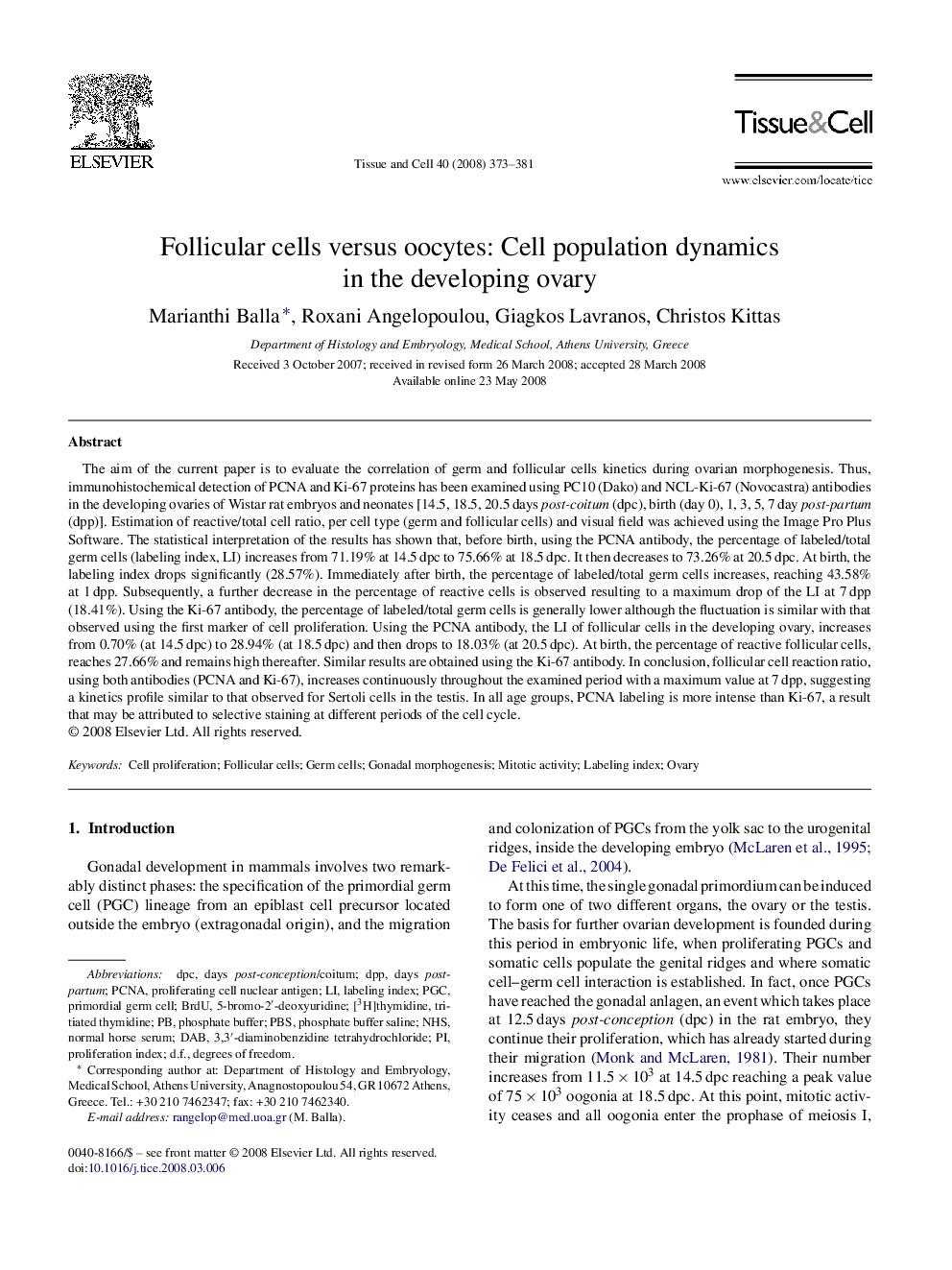| Article ID | Journal | Published Year | Pages | File Type |
|---|---|---|---|---|
| 2204059 | Tissue and Cell | 2008 | 9 Pages |
The aim of the current paper is to evaluate the correlation of germ and follicular cells kinetics during ovarian morphogenesis. Thus, immunohistochemical detection of PCNA and Ki-67 proteins has been examined using PC10 (Dako) and NCL-Ki-67 (Novocastra) antibodies in the developing ovaries of Wistar rat embryos and neonates [14.5, 18.5, 20.5 days post-coitum (dpc), birth (day 0), 1, 3, 5, 7 day post-partum (dpp)]. Estimation of reactive/total cell ratio, per cell type (germ and follicular cells) and visual field was achieved using the Image Pro Plus Software. The statistical interpretation of the results has shown that, before birth, using the PCNA antibody, the percentage of labeled/total germ cells (labeling index, LI) increases from 71.19% at 14.5 dpc to 75.66% at 18.5 dpc. It then decreases to 73.26% at 20.5 dpc. At birth, the labeling index drops significantly (28.57%). Immediately after birth, the percentage of labeled/total germ cells increases, reaching 43.58% at 1 dpp. Subsequently, a further decrease in the percentage of reactive cells is observed resulting to a maximum drop of the LI at 7 dpp (18.41%). Using the Ki-67 antibody, the percentage of labeled/total germ cells is generally lower although the fluctuation is similar with that observed using the first marker of cell proliferation. Using the PCNA antibody, the LI of follicular cells in the developing ovary, increases from 0.70% (at 14.5 dpc) to 28.94% (at 18.5 dpc) and then drops to 18.03% (at 20.5 dpc). At birth, the percentage of reactive follicular cells, reaches 27.66% and remains high thereafter. Similar results are obtained using the Ki-67 antibody. In conclusion, follicular cell reaction ratio, using both antibodies (PCNA and Ki-67), increases continuously throughout the examined period with a maximum value at 7 dpp, suggesting a kinetics profile similar to that observed for Sertoli cells in the testis. In all age groups, PCNA labeling is more intense than Ki-67, a result that may be attributed to selective staining at different periods of the cell cycle.
